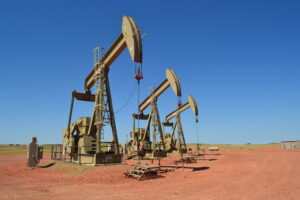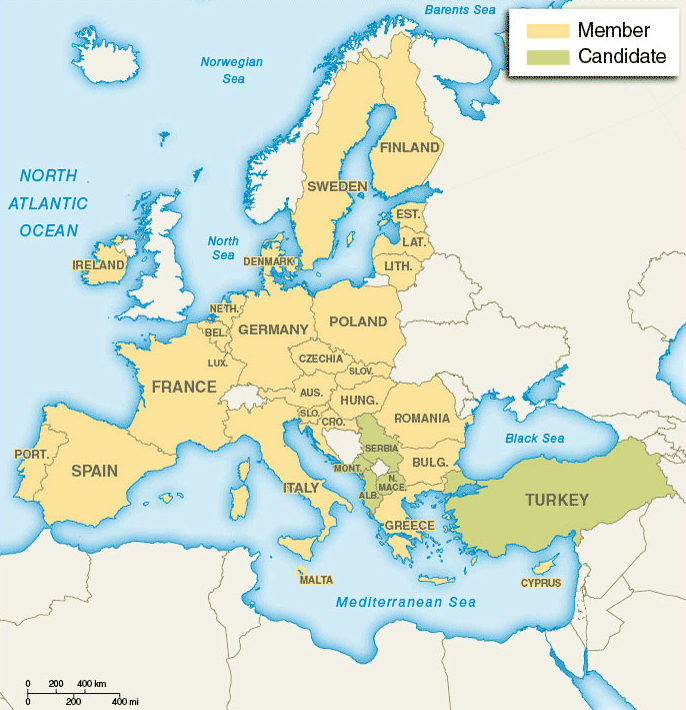‘Green Burden’: How Global Climate Policies Could Impact Russia

(Russia Matters – russiamatters.org – Danila Bochkarev – Aug. 4, 2021)
Danila Bochkarev is associate researcher at the Institute of Political Science Louvain-Europe.
 Gradually, Russia is adjusting its policies to better absorb the impact of these changes. Its main battle for now will be with Brussels, which is most advanced among global players in promoting both carbon taxation and cuts in hydrocarbon usage. But there are signs that Russia’s leadership is starting to take the challenge seriously at a more strategic level: In addition to modeling various scenarios, the government has reportedly created working groups to explore ways Russia could adapt to the so-called global energy transition. This green revolution will deal a “unique” blow to the Russian economy and may lead to a global regrouping of countries and the formation of a new global elite within the next decade, according to comments attributed to President Vladimir Putin’s point man for sustainability, Anatoly Chubais.
Gradually, Russia is adjusting its policies to better absorb the impact of these changes. Its main battle for now will be with Brussels, which is most advanced among global players in promoting both carbon taxation and cuts in hydrocarbon usage. But there are signs that Russia’s leadership is starting to take the challenge seriously at a more strategic level: In addition to modeling various scenarios, the government has reportedly created working groups to explore ways Russia could adapt to the so-called global energy transition. This green revolution will deal a “unique” blow to the Russian economy and may lead to a global regrouping of countries and the formation of a new global elite within the next decade, according to comments attributed to President Vladimir Putin’s point man for sustainability, Anatoly Chubais.
The Specter of Shrinking Demand
Russia has already gotten a taste of lower hydrocarbon demand due to the global economic downturn induced by the COVID-19 pandemic. Between 2017 and 2020, according to an analysis by the RBC business news site, the share of oil and gas among Russian exports declined from 54.1% to 44.6%, while the “hydrocarbon income” of the federal budget shrank from 39.6% to 28% and the oil-and-gas sector’s share in Russia’s GDP decreased from 16.9% to 15.8%.
Modeling done by Russia’s Finance Ministry has likewise shown that clean-energy policies across the world—including carbon pricing and more widespread use of renewable energy—could put significant downward pressure on global demand for fossil fuels. “A big share of our budget revenues come from exporting commodities, so we need to understand how we’ll replace falling revenues if these forecasts prove accurate,” Russian Finance Minister Anton Siluanov told Bloomberg last month.
Different Trade Partners, Different Impacts
Outside of contingencies such as the pandemic, however, the impact of EU, Chinese and U.S. “greening” on Russia will be strongly differentiated, with European policies, as noted above, posing the most concern for Russian officials and businesses, Chinese policy still full of question marks and U.S. policies likely to have the least significant impact of the three. Part of this difference stems from Russia’s volume of trade with each player. According to EU statistics, the bloc accounted for 37.3% of Russia’s total trade in goods with the world in 2020 and 37.9% of its exports ($125.7 billion), which included 26% of the EU’s oil imports and 40% of its gas imports in the first half of 2020. (Pre-pandemic, in 2019, the EU accounted for 44.7% of Russia’s exports, worth $189.5 billion, according to Russia’s customs service.) By comparison, Russia’s 2020 exports to China totaled just $49.1 billion (14.6%), according to the Russian customs service, and to the U.S. a mere $10.8 billion (3.2%).
 While the EU’s environmental policies and their impacts on Russia deserve a more detailed discussion (below), the climate agenda is still negligible in Moscow’s relations with energy-hungry China, which does not currently have any publicly known plans to tax carbon-intensive imports — of which Russia is a top supplier. Moreover, considering the importance of energy supply diversification for Beijing, even if China does introduce a carbon tax it is likely to be accompanied by various opt-outs for Russian energy exports. However, in the next decade or two, Beijing’s environmental policies could slow down Russian energy supplies to China. President Xi Jinping announced in September 2020 that the country’s carbon emissions would begin to decline by 2030. Furthermore, Beijing aims to reduce the share of carbon-heavy fuel in national energy consumption to 20% by 2025. This might reduce China’s currently growing demand for Russian coal. (Similarly, Japan recently announced its plans to increase the share of renewables and nuclear energy to, respectively, 36-38% and 20-22% of the country’s electricity mix by 2030. This move will decrease the share of coal and liquified natural gas, respectively, from 32% to 19% and 37% to 20%. While this move will primarily affect Australia and Qatar, Russian exports may be impacted as well.)
While the EU’s environmental policies and their impacts on Russia deserve a more detailed discussion (below), the climate agenda is still negligible in Moscow’s relations with energy-hungry China, which does not currently have any publicly known plans to tax carbon-intensive imports — of which Russia is a top supplier. Moreover, considering the importance of energy supply diversification for Beijing, even if China does introduce a carbon tax it is likely to be accompanied by various opt-outs for Russian energy exports. However, in the next decade or two, Beijing’s environmental policies could slow down Russian energy supplies to China. President Xi Jinping announced in September 2020 that the country’s carbon emissions would begin to decline by 2030. Furthermore, Beijing aims to reduce the share of carbon-heavy fuel in national energy consumption to 20% by 2025. This might reduce China’s currently growing demand for Russian coal. (Similarly, Japan recently announced its plans to increase the share of renewables and nuclear energy to, respectively, 36-38% and 20-22% of the country’s electricity mix by 2030. This move will decrease the share of coal and liquified natural gas, respectively, from 32% to 19% and 37% to 20%. While this move will primarily affect Australia and Qatar, Russian exports may be impacted as well.)
U.S. domestic climate policy is not likely to have a strong impact on Russia’s exports since their part in America’s energy mix is very small.
Looming Carbon Taxes
The most immediate challenge for Russia’s carbon-intensive exporters will likely come from the Carbon Border Adjustment Mechanism, or CBAM, proposed by the European Commission on July 14—a de facto tax on half a dozen imports that emit large amounts of CO2 during production and/or extraction: iron and steel, cement, fertilizer, aluminum and electricity. These industries will have to institute a carbon-reporting system as of 2023 and “importers will start paying a financial adjustment in 2026.” (Currently, oil and gas are not covered under the CBAM but may be included in the future; if they are, Russian companies will be hit significantly harder, considering that in 2020 metals accounted for only 8.9% of exports, according to Russia’s Federal State Statistics Service, while energy—chiefly oil and gas—accounted for 62.1%.) Recent estimates by Russia’s Ministry of Economic Development valued the Russian exports affected by CBAM at $7.6 billion. According to one analysis, the annual losses of Russia’s aluminum and steel producers under the new taxation mechanism could reach $355 million and $300 million, respectively. As of 2035, when no free EU CO2 emission quotas will be available, Russian exporters may have to pay $1.3 billion per year, according to estimates by RBC (based on a carbon price of $59/ton). The most affected sectors, RBC predicts, will be steel and steel products at $772 million a year and fertilizers at $469 million a year. RBC estimates that Russia will be the hardest hit country, followed by Turkey ($583.6 million), Ukraine ($472 million) and the UK ($342 million), while the impact on China ($250 million) and the U.S. ($41 million) would be much smaller.
Prior to the publication of the CBAM documents, international consultancies made their own impact assessments, factoring in hydrocarbons. All these assessments are preliminary and based on multiple factors, including the EU carbon price, which is currently on an upward trend. Boston-headquartered management consulting firm BCG, for example, forecasted the EU carbon tax reaching $1.4 billion to $2.5 billion a year for oil and gas exporters and $400 million to $600 million a year for steel exporters. Anglo-Dutch KPMG, one of the Big Four accounting firms, offered estimates for an optimistic scenario in which taxes for all export items are introduced in 2028, with annual taxes for Russia’s gas exports reaching $1.1 billion to $1.8 billion, for coal $285 million to $475 million and for fertilizers $106 million to $180 million. KPMG also provided an assessment of the carbon tax impact on countries other than Russia: the United States ($1.5 billion to $2 billion), China ($1.4 billion), Saudi Arabia ($720 million to $920 million) and Qatar ($340 million to $370 million). Again, these numbers are preliminary and subject to change. For example, in the case of the U.S., CBAM-related “adjustments” will depend on the volumes of American LNG supplied to Europe and its carbon intensity, which remains a subject of study and debate.2
Collective Efforts and National Interests
Last month’s failure by G20 energy and environmental ministers to agree on key climate change commitments gives a sense of the tensions between collective climate goals and specific impacts on national economies. In this context, the Biden administration seems to be hoping to find as much common ground as possible with Moscow. During the bilateral presidential summit in June, the two sides identified climate change as a promising area for cooperation amid the otherwise adversarial relationship. U.S. climate change envoy John Kerry held high-level meetings in Moscow in July, in part to discuss coordinated action with Russia at the U.N. Climate Change Conference (COP26) scheduled for Oct. 31-Nov. 12, 2021. While post-meeting reports were short on details, the joint statement issued after the talks certainly emphasized points of convergence rather than divergence, including a shared commitment “to the robust implementation of the Paris Agreement and its temperature goals.”
Moscow is sometimes accused of climate inaction. While this is not entirely true, Russia’s environmental policy has traditionally had a different focus than in the West, often giving priority to issues not directly linked to climate change, such as waste treatment and reduction of non-greenhouse-gas pollution by industry.
Nevertheless, Russia—as a response partly to global climate action and partly to the adverse effects of global warming at home—has recently launched its own low-carbon policies,3 focused on emissions control and hydrogen as an alternative fuel. In October 2020 the Russian government adopted a roadmap for hydrogen emphasizing the development of domestic consumption and promotion of exports of this gas to Europe and Asia. (Specific incentives, such as tax breaks and state aid, are still being developed.) Hydrogen—which has a zero-carbon footprint as a fuel but remains relatively carbon-intensive to produce—is expected to be used as a fuel for transport, power generation and in the chemicals industry, especially as its production cycle’s carbon footprint gets lower thanks to technological advances. Realistically, mass production of hydrogen is likely to start around the mid-2020s. For example, both Gazprom and Rosatom expect to launch hydrogen production plants by 2024 and even export hydrogen via existing pipeline infrastructure, including Nord Stream 2.4 On July 2 Putin signed a law introducing mandatory carbon reporting for the largest greenhouse gas emitters in Russia starting in January 2023. This move is a clear response to the EU’s, China’s and other players’ (including several U.S. states’) carbon-market policies. It will also permit Russian companies to sell carbon units abroad when they are internationally recognized as offsetting emissions. A pilot carbon marketplace project in Sakhalin, a major oil- and gas-producing province in Russia’s Far East, will be operational in 2022; emissions, forest absorption and other parameters will be measured to ensure international standards are met. The goal is to have the region become carbon neutral by 2025—realistic, in my view, considering the small size of Sakhalin’s economy (less than $20 billion) and the abundance of CO2-absorbing forests on the island.
In this shifting policy landscape, a lack of flexibility in applying the CBAM could increase political tensions between Brussels and Moscow. Russia is developing energy transition plans at its own pace and is increasingly frustrated with what Economic Development Minister Maxim Reshetnikov called an imposition of “EU regulatory practices on other countries”—a view shared by other developing countries (Brazil’s president has labeled the application of the EU’s environmental standards “colonialism”). Reshetnikov also noted that the CBAM’s effectiveness in combatting climate change is far from obvious. Furthermore, Russia’s new National Security Strategy stresses that climate issues should not be used as a pretext to restrict access to markets and limit the development of Russia’s industry. In this atmosphere, the real challenge for the EU and Russia will be to find a greater degree of compatibility between European and Russian taxonomies—i.e., classification systems establishing environmentally sustainable economic activities. For example, nuclear power is considered “green” in Russia, as are hydrogen production and gas-fired power generation if they emit less than 100 grams of CO2 per KWh; on the contrary, the European Commission has not yet decided whether to label nuclear and natural gas power plants as sustainable investments under its green finance rules. In the case of hydrogen, Brussels clearly privileges hydrogen produced from renewable electricity (“green” hydrogen), while other types of hydrogen (produced using gas and nuclear power) play a secondary role in the EU Hydrogen Strategy, despite their low carbon footprint and attractive cost, especially when compared to “green” hydrogen. There is even disagreement on the climate effect of Russian forests: While Moscow this year announced plans for leasing wooded areas in the Russian Far East to corporations that could claim carbon credits equivalent to the carbon captured there, Brussels questions Moscow’s assessments of the country’s CO2 absorption capacity: “Russian forest sink is still very uncertain,” said Giacomo Grassi of the European Commission’s Joint Research Center after reviewing new research on the forests’ role in carbon sequestration. At the same time, Russian analysts can’t help but note inconsistencies in EU policies: For instance, EU consumers burn biomass (imported from the U.S. and Russia, among other countries) and the EU labels this practice “green,” although hundreds of scientists have argued that the biomass industry is on course to cause “expansive harm to the world’s forests and the acceleration of climate change” and it is already degrading habitat in poor communities.
Short-Term Outlook
In sum, we can expect to see the following trends: Russia and China will continue their relationship as energy supplier and energy consumer (though China’s climate policies, like Japan’s, might force Russian coal and LNG exporters to adapt to new market realities); Moscow and Washington will seek opportunities for cooperation on climate change; and the real battle for now will be between Russia and the EU. As Siluanov, the finance minister, told Bloomberg, “Russia needs a deal with the Europeans to recognize our efforts in the transition to a green economy.” CBAM’s impact will be powerful, both financially and politically: It will create additional costs for Russian exporters and, if expanded to oil and gas, could hurt Russia’s budget. Moscow’s policy response will likely be focused internally on the launch of a domestic carbon-trading scheme—to partially mitigate the EU measures’ adverse effects—and externally either on legal challenges to the EU measures at the World Trade Organization or on pressing Brussels for a more nuanced approach to Russia’s green taxonomy.
Footnotes
1. Under some rather radical scenarios developed by the International Energy Agency global oil consumption would peak as soon as this year and global gas consumption would stop growing in 2030.
2. A 2018 study concluded that methane leakage (causing massive emissions of greenhouse gases) from the U.S. oil and gas supply were 60% higher than U.S. Environmental Protection Agency estimates, and Cornell University’s Robert Howarth has estimated that North American shale gas production may be responsible for about a third of the global increase in methane emissions over the past decade.
3. Russia is rapidly increasing its trade with Asia, mostly thanks to high demand for energy and raw materials; thus far, neither the government nor private companies have announced plans to divert exports to countries with no carbon taxes.
4. The CEO of Nord Stream 2, Matthias Warnig, has anticipated that the pipeline would be ready to transport hydrogen in 10 years. Earlier, Andreas Schierenbeck, then CEO of German energy company Uniper, confirmed that potentially the share of hydrogen in the blend transported via Nord Stream 2 could reach 80% (with methane making up the remaining 20%).
Article also appeared at russiamatters.org/analysis/green-burden-how-global-climate-policies-could-impact-russia, with different images, bearing the notice: “© Russia Matters 2018 … This project has been made possible with support from Carnegie Corporation of New York,” with a footer heading entitled “Republication Guidelines” linking to: russiamatters.org/node/7406, which bears the notice, in part:
“If you would like to reprint one of these articles, a blog post written by RM staff, one of our infographics or a fact-check, we ask that you follow these guidelines:
- Include a prominent attribution to Russia Matters as the source and link back to the original at RussiaMatters.org.
- Retain the hyperlinks used in the original content.
- Do not change the meaning of the article in any way.
- Get an ok from us for non-substantive changes like partial reprints or headline rewrites and inform readers of any such modifications (e.g., This article first appeared on the Russia Matters website with the headline “Russian Election Interference in Trump’s Own Words”).
- Let us know about the reprint and send a link!
Please note that Russia Matters cannot grant permissions for third-party content, including articles, photographs and other materials not produced by our team.
Questions? Email us at RussiaMatters@hks.harvard.edu.”
